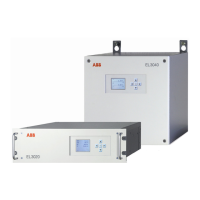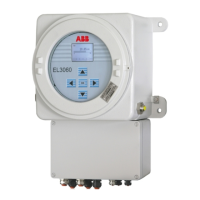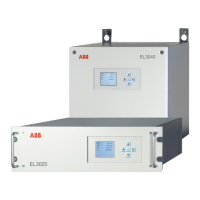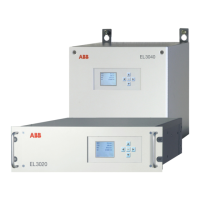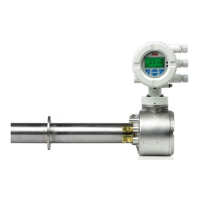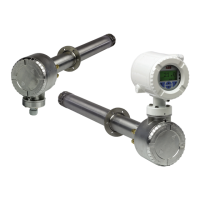16 EL3000 CONTINUOUS GAS ANALYZERS | CI/EL3000-EN REV. C
… 3 Preparation for Installation
Uras26
Sample gas
Sample gas inlet conditions
Explosion hazard
Explosion hazard when measuring ignitable gas / air or
gas / oxygen mixtures
• The gas analyzer may not be used for the measurement of
ignitable gas / air or gas / oxygen mixtures
– sample gas input conditions
The sample gas dew point should be at least 5 °C below the temperature
throughout the sample gas path. Otherwise a sample gas cooler or
condensate trap is required.
The analyzer is operated under atmospheric pressure; the
sample gas outlet is
< 5 hPa at standard flow rate of 60 l/h.
Permissible absolute pressure range:
to 1250 hPa.
Operation under lower absolute pressure
(e.g.
at altitudes above 2000 m) on
Gauge pressure in the sample cell:
Corrosive gases
The analyzer may not be used for measurement in corrosive
gases. Associated gases, such as chlorine (Cl
2
) or hydrogen
chlorides (such as wet HCl) as well as gases or aerosols
containing chlorine must be cooled or pre-absorbed.
Flammable gases
In the version with gas lines and gas connectors made of
stainless steel, the analyzer is suited for the measurement of
flammable gases in non-explosive environments.
The special conditions when measuring flammable gases must
be observed, see Special conditions for the model EL3020 gas
analyzer for the measurement of flammable gases on page 14.
Flowing reference gas
Gas inlet conditions as for sample gas
Pressure sensor
The pressure sensor is installed in the gas analyzer as standard,
see Pressure sensor on page 33.
The pressure sensor is connected to the sample gas path or a
connection socket at different positions depending on the
design of the gas analyzer, see Position and design of the gas
connections on page 42.
The connection of the pressure sensor is also documented in the
pneumatic diagram included in the device data sheet.
Gas connections
See Gas connections Uras26 (model EL3020) on page 43 and
Gas connections Uras26 (model EL3040) on page 45.
